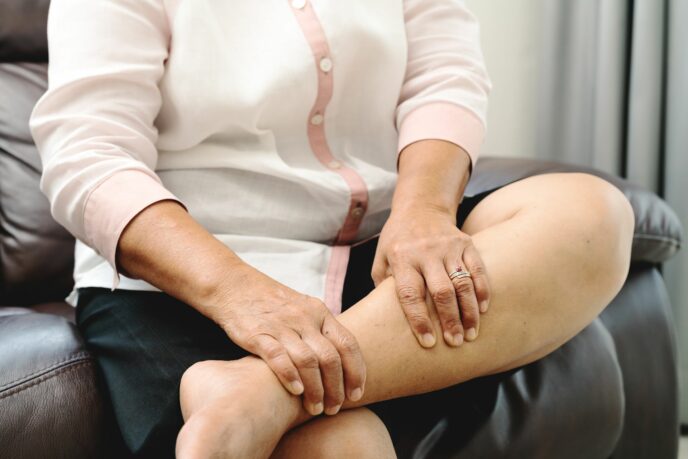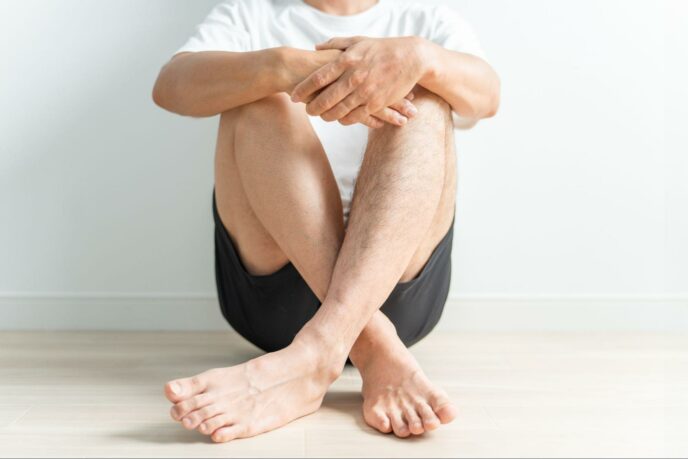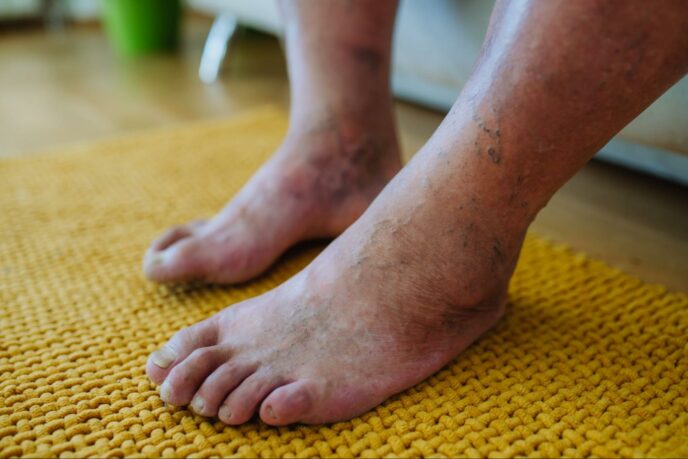
Why Are My Legs Tingling?
Have you ever experienced a tingling sensation in your legs after a brisk walk or even climbing a flight of stairs? While this may seem like a minor inconvenience, it could be a sign of an underlying condition, particularly peripheral artery disease (PAD). PAD is a common vascular disease characterized by the narrowing of arteries that supply blood to the legs and feet. This reduced blood flow can lead to a variety of symptoms, including leg pain, cramping, and tingling.
What Causes Tingling in the Legs in Peripheral Artery Disease?
When you engage in physical activity, your leg muscles demand an increased supply of oxygen and nutrients to support their work. However, in the presence of PAD, the narrowed arteries struggle to deliver this essential blood flow, leading to a deficit of oxygen and nutrients in the muscles. This deficiency, in turn, can trigger a variety of sensations, including tingling, numbness, burning, and cramping.
The tingling sensation is often described as a pins and needles feeling or a prickling sensation in the legs. It may be localized to specific areas, such as the calves or thighs, or it may radiate throughout the lower leg. In some cases, the tingling may be accompanied by other symptoms, such as muscle fatigue, weakness, or coolness in the legs.
The Severity of Tingling: Mild to Severe
The intensity of the tingling sensation in the legs can vary depending on the severity of PAD. In mild cases, the tingling may only be noticeable after prolonged physical activity. However, as the disease progresses and the arteries become more narrow, the tingling can become more frequent, even with minimal exertion. In severe cases, the tingling may become constant, and can even progress to muscle weakness and pain.
Is Leg Tingling Always a Symptom of Peripheral Artery Disease?
No, leg tingling can have various causes, including nerve compression, diabetes, and other factors after exercising or walking. While it can be a symptom of PAD, it is not exclusive to this condition. Here are other reasons why you may be experiencing tingling in the legs.
Dehydration and Electrolyte Imbalance
Intense physical activity can lead to dehydration, affecting the balance of electrolytes in the body. Electrolytes such as sodium, potassium, and calcium play a crucial role in nerve function. An imbalance can disrupt nerve signals, causing tingling sensations.
Diabetic Neuropathy
Diabetes, especially when poorly controlled, can damage nerves over time. Diabetic neuropathy often starts in the feet and legs, causing tingling, numbness, or a “pins and needles” sensation. Monitoring blood sugar levels and managing diabetes effectively are crucial steps in preventing and managing neuropathic symptoms.
Footwear and Compression
Wearing ill-fitting shoes or engaging in activities that involve tight compression, such as cycling with improper form or using equipment that restricts blood flow, can contribute to tingling in the legs and feet after exercising.
Nerve Compression or Damage
Herniated discs in the spine or conditions like spinal stenosis can exert pressure on the nerves, leading to tingling in the legs. Sciatica, a common condition where the sciatic nerve is compressed, can cause radiating pain and tingling sensations from the lower back down to the legs.
Vitamin Deficiencies
Vitamins B12 and D play pivotal roles in nerve health. Deficiencies in these vitamins can lead to peripheral neuropathy, characterized by tingling sensations in the legs and feet. Incorporating foods rich in these vitamins or taking supplements under medical guidance can address deficiencies.
Leg Tingling and Related PAD Symptoms
The tingling sensation in the legs associated with PAD is often accompanied by other symptoms, such as:
Leg Cramping
As the muscles in your legs struggle to function due to impaired blood flow, you may experience cramping and tightness, especially when you engage in physical activity.
Leg Pain
The lack of oxygen and nutrients to the muscles can also lead to leg pain, often described as a burning or aching sensation. This pain typically occurs after exertion and subsides with rest.
Leg Numbness
The narrowed arteries also restrict the flow of warm blood to the legs, making them feel numb and colder than the rest of your body. This numbness may be more pronounced in the lower legs and feet.
Can Lifestyle Changes Help Alleviate Leg Tingling in Peripheral Artery Disease?
Yes, lifestyle changes such as quitting smoking, engaging in regular exercise, and following a healthy diet can help manage PAD symptoms, including leg tingling.
Regular Exercise
Engaging in regular physical activity can help strengthen leg muscles, improve circulation, and reduce the risk of further blockages.
Smoking Cessation
Smoking constricts blood vessels, hindering blood flow. Quitting smoking is crucial for managing PAD and preventing further complications.
Diet Modifications
A healthy diet low in saturated fat, cholesterol, and sodium can help lower blood pressure and cholesterol levels, reducing the risk of plaque buildup.
How is Peripheral Artery Disease Diagnosed if I Experience Leg Tingling?
Diagnosis of PAD typically involves a physical examination, medical history review, and non-invasive tests such as ankle-brachial index (ABI) measurement, Doppler ultrasound, or angiography.
When Should I Seek Medical Attention for Leg Tingling?
If you experience persistent or worsening leg tingling, especially if it is accompanied by pain, it’s important to see a healthcare professional promptly. Early detection and management can help prevent complications associated with peripheral artery disease.
How to Treat Tingling in the Legs Caused By PAD
If you have tingling in the legs and are diagnosed with peripheral artery disease, there are several treatment options available, including an atherectomy, angioplasty, and stent placement.
Angioplasty
Angioplasty is a minimally invasive procedure that is used to open up a blocked or narrowed artery. During an angioplasty, a thin catheter with a balloon at the tip is inserted into the artery. The balloon is then inflated, which compresses the plaque against the artery wall and opens up the artery. In some cases, a stent may be placed in the artery to help keep it open.
Stenting
A stent is a small metal tube that is placed in an artery to help keep it open. Stents are often used in conjunction with angioplasty to ensure that the artery stays open after the procedure.
Atherectomy
Atherectomy is a procedure that is used to remove plaque from an artery. During an atherectomy, a specially designed catheter with a cutting or ablating device at its tip is guided through the blood vessels to the site of the plaque to remove it.
These are just a few of the minimally invasive procedures that can be used to treat PAD. The specific procedure that is right for you will depend on the severity of your PAD and your overall health.
Addressing the Tingling Sensation with American Endovascular
Tingling in the legs, while often a minor annoyance, can be a sign of a more serious underlying condition like PAD. By understanding the connection between PAD and leg tingling, you can take the necessary steps to seek early diagnosis and treatment, preventing complications and improving your overall health. Contact American Endovascular to request an appointment with one of our vascular specialists in New York and New Jersey to learn more about your symptoms and treatment options
Related Blogs & Videos
Learn more about vascular health, prevention, and care for Peripheral Artery Disease.




